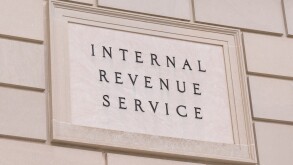
|

|
|
Khoonming Ho |
Lewis Lu |
On December 2 2014 the Chinese State Administration of Taxation (SAT) released the general anti-tax avoidance rules (GAAR) measures, which define the ambit of tax avoidance schemes and set out in detail the tax authority procedures to be followed for GAAR case selection, examination and conclusion. The GAAR measures explain the main features of a tax avoidance arrangement: (i) that the sole or main purpose of the arrangement is to obtain a tax benefit, and (ii) that the arrangement, in pursuing tax benefits, takes a form permissible under tax rules, but which is not consistent with its underlying economic substance. This formulation reiterates the 'purpose' focus as well as the form and substance of the arrangement in making the evaluation and clarifies further the manner in which economic substance is to be considered in applying the GAAR purpose test. Regarding economic substance, the SAT adds an illustration that where a preferential tax policy is availed of under the Corporate Income Tax (CIT) Law then, to the extent that the economic substance of the arrangement fulfils the conditions for preferential treatment, the tax advantage cannot be subject to the GAAR, as the CIT Law offered such treatment.
Ordering rules, for the application of domestic special anti-avoidance rules (SAAR) before the GAAR, and for the use of treaty SAARs before domestic anti-avoidance provisions, are set out. This approach mirrors the practice adopted in many other countries. However, a scheme which passes muster under a (domestic or treaty) SAAR may still be further challenged as the GAAR would have residual application. Additionally, the Chinese tax authorities have inserted specific 'Miscellaneous Rule' articles in most of their recent tax treaties reserving their right to use the GAAR unfettered by treaty commitments.
Where a GAAR investigation is to be initiated, approval must be obtained from the SAT, the local tax authorities having elevated the request for approval through the various higher level tax authorities above them. The documentation to be provided by taxpayers, who bear the onus of proof in a GAAR investigation, includes information on: (i) the arrangement background and explanations of its commercial purpose; (ii) the internal decision-making process and governance of the taxpayer; (iii) transaction documentation; (iv) communications between the taxpayer and other parties to the transaction; and (v) documentation proving the arrangement's non-tax avoidance nature and other documents required by the tax authority. The documentation may also be demanded by the tax authorities from other related parties including the tax advisers.
The GAAR special tax adjustments which may be used to counter tax benefits are clarified to include: (i) re-characterisation of the whole or part of the arrangement; (ii) denial of the existence of a party to the transaction for tax purposes, or treating one of the party and other parties to the transaction as one entity; (iii) recharacterisation of the income, deductions, tax incentives and foreign tax credits or reallocation of them between the parties to the transaction; and (iv) any other reasonable method.
The GAAR measures apply from February 1 2015. Notably, the measures do not apply to solely domestic transactions with no cross-border element, and also exclude tax evasion cases, but do apply to offshore indirect transfer cases.
Khoonming Ho (khoonming.ho@kpmg.com)
KPMG, China and Hong Kong SAR
Tel: +86 (10) 8508 7082
Lewis Lu (lewis.lu@kpmg.com)
KPMG, Central China
Tel: +86 (21) 2212 3421









